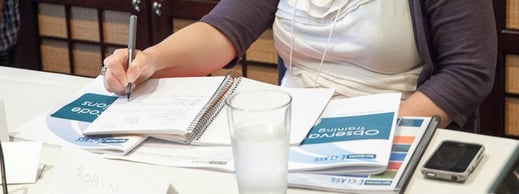
Personal biases can challenge observers assessing the quality of teacher-child interactions with the Classroom Assessment Scoring System (CLASS). In Assessment in Early Childhood, author Sue Wortham (2005) states that “one cause of observer bias is differences in value systems. It is easy to apply one’s own value system when observing in a school” (pg.114).
When we, as observers, step into classrooms, we are carrying along with us our own value systems, our programs approach systems, and our own hard-earned knowledge gained through experience in the field. Over time these things become our many “lenses” we rely on to assess quality in early childhood classrooms. Occasionally, those very lenses can keep us from being a reliable observer when using the CLASS measure.
Wortham goes on to note that “the observers reaction to the site can distort his or her use of observational data. Each observer has a perception of the characteristics of a “good” school or center” (pg. 114). During CLASS observation trainings, participants sometimes struggle with their own value systems while observing and measuring quality in videos of classroom interactions. If a potential observer is having an emotional reaction to a training video, such as a strong liking of the teacher’s style or dislike of the activity the children are involved in, the trainee may be challenged to accurately code those classroom interactions. Being an objective observer, and using the CLASS lens as our guide, is essential to producing reliable classroom data.
For example, after viewing a training video, a participant states, “I felt like the children were comfortable in the classroom.” As a CLASS trainer, I press the group to think about the evidence for student comfort, rather than relying on feelings. Using CLASS, we can move beyond feelings and instead look for markers that point to the children's comfort in the classroom.
Chapter 2 of the CLASS manual addresses challenges for the observer, including remaining objective. By basing scores on the written descriptions of the CLASS dimensions and keeping ideas that are not part of the CLASS lens out of your observation, you can better ensure an objective and reliable outcome.
It is reassuring to know that the CLASS measure is grounded in child development as it captures the complexity of classrooms. As an observer, you can trust that the tool will appropriately capture the strengths in the classroom, as well as the concerns you may have. The exciting (and supportive) thing about CLASS is that the measure complements a variety of structures, approaches, and curriculums used out in the field.
We early childhood education professionals are passionate about our work, and CLASS, when used objectively, will support observers who are focused on what truly impacts student outcomes: quality teacher-child interactions as defined by CLASS!
Reference
Wortham, S. 2005. Assessment in Early Childhood Education. Upper Saddle River,
NJ: Pearson.

